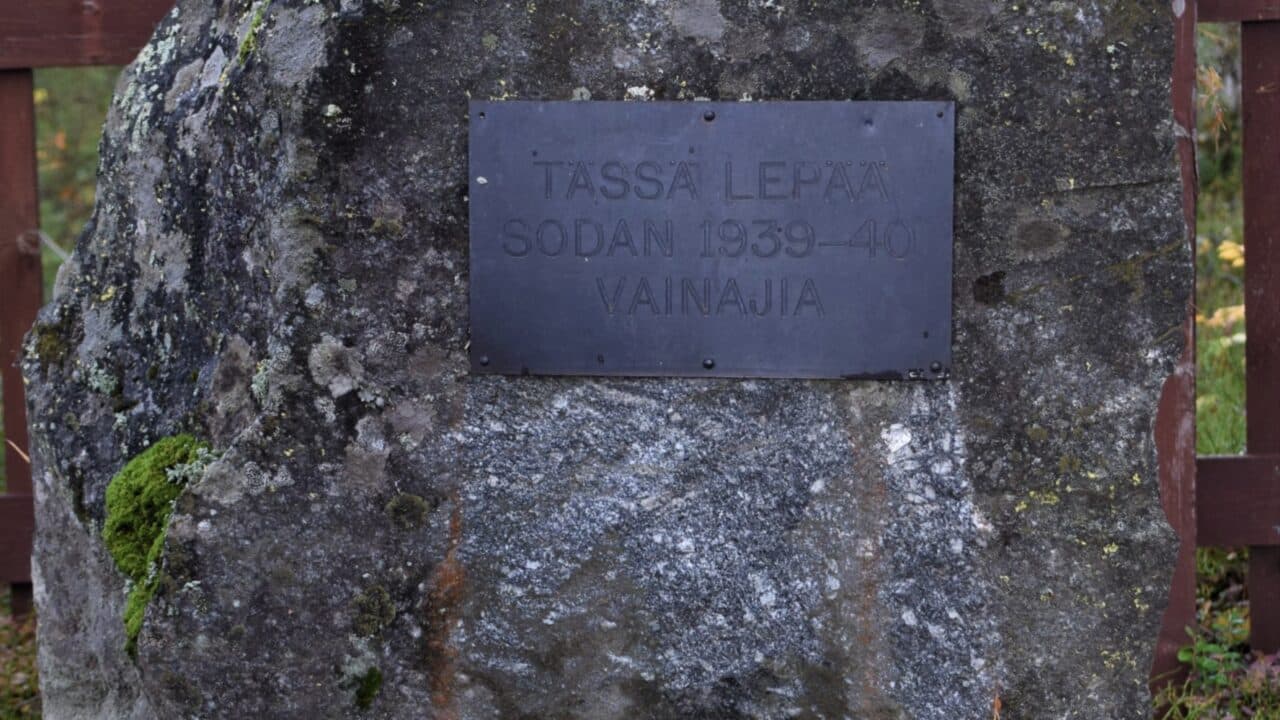Paloaho motti
Finnish troops launched a counterattack in Kuhmo at the end of January 1940. As a result, ten mottis of different sizes gradually emerged along the Saunajärventie Road. Only four of these mottis were destroyed before the end of the war, one of which is the restored Paloaho motti.

Winter War motti and memorial in Paloaho
On the western side of Löytövaara, in Paloaho, was one motti encircled by the Finns. Finnish troops seized the motti area on 11–12 February 1940. As a result of the battle, the strongpoint’s collapsed dugouts became a burial place for Red Army soldiers. The battle and the destruction of the motti are described in more detail on the information board on site.
One dugout and two machine gun nests of the strongpoint were rebuilt on the north side of the road by the City of Kuhmo in 1998–1999.
A fenced cemetery was established on the site, and a memorial stone with a plaque was erected there in 1985. Remains of Red Army soldiers found on the field have been buried in the cemetery on later occasions as well. In 2012, the remains of 15 deceased, brought from Hietaperä in Kuhmo and Hulkonaho in Suomussalmi, were buried in the cemetery.
The Russian Military Historical Society erected a new memorial in Paloaho to commemorate the 9th Ski Battalion formed in Arkhangelsk. It was one of the ski battalions of the Dolin Ski Brigade. Twenty-three soldiers of the ski battalion are buried in the cemetery. The memorial was unveiled on 24 May 2019.
The formation of the Red Army’s ski battalions was started by order of the high command in December 1939. According to the prisoner of war records, the formation of the 9th Ski Battalion took place between 31 December 1939 and 12 January 1940. On 15–19 January, the battalion was transported by train to Kem. Next, it was transported by lorries via Uhtua (nowadays Kalevala) to Vuonninen (Voinitsa). From there the battalion continued to the border on skis. The battalion commander, Captain Lushanov, and the political commissar were killed in action, presumably on 13 February. The main part of the battalion was destroyed in battle in the Kesseli area on 14–16 February.
